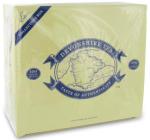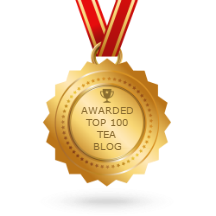Just as there are advantages in blended teas, there are advantages in unblended teas. There are two types of “unblended” or “pure” teas: single-estate and single tea type.
Single-estate Teas
These unblended teas are actually sold under the name of the tea estate where they are grown, harvested, processed, and packaged. They are often identified by when harvested (the year and the flush, i.e., first, second, or autumn). In fact, there is a trend toward knowing when and where a tea was harvested and standards for labeling teas with this information are being proposed.

Borengajuli Estate is one of my favorite estate teas. It’s pure Assam from the Borengajuli Estate in India. Golden Moon’s French Breakfast is another example. It’s an estate tea with long, wiry leaves from the high mountain region in Sri Lanka (formerly Ceylon). You get a smooth cup that’s amber colored and has a hint of honey in the flavor. Try it with breakfast or possibly a nice pastry for your afternoon teatime treat.
With a single-estate tea, you know exactly what you’re getting. As you learn more about tea, this becomes increasingly important. These teas generally have a nuanced flavor and subtle character totally lacking in blended teas. They will vary, though, depending on growing conditions and time of harvest. For example, Darjeelings harvested in Autumn have stronger flavor and are considered lower quality than first (Spring) and second (Summer) flushes.
Single Tea Type Teas
Of course, unblended teas don’t have to be all from the same grower. They could just be the same kind of tea. Irish Breakfast tends to be pure Assam and is labeled “blend” sometimes because the tea doesn’t all come from the same estate. (Note: Some Irish Breakfast teas are blends of Assam and other types of tea such as Keemun or Ceylon.)

Unblended teas are usually higher quality than blended teas. A blended tea can have lower quality teas mixed in with the higher quality tea, and you wouldn’t be able to tell. This is especially true of those cheap bagged teas at the discount store, as opposed to teas like Devonshire Tea, blended from four Kenyan estate teas, or Monk’s Blend that uses only high-quality teas as evidenced by the taste.
I’m speaking generally here. Buying your blended teas from vendors whom you know to use only high-quality teas assures that you’re getting the best.
Some single-tea types are greens such as Gunpowder (Chinese) and Sencha (Japanese). Also, oolongs are often not blended with other tea types. An example is Harney & Sons Da Hong Pao Oolong. Many white teas are also unblended, such as Adams Peak White Tea and Darjeeling White Tips White Tea.
Pick an unblended tea to try. Then, enjoy its distinct flavor, like the pure voice of a flute playing solo. Enjoy!
To learn more about the various types of tea, stop by A.C.’s blog, Tea Time with A.C. Cargill!



Leave a reply to Tea and the Color Wheel « Tea Blog Cancel reply